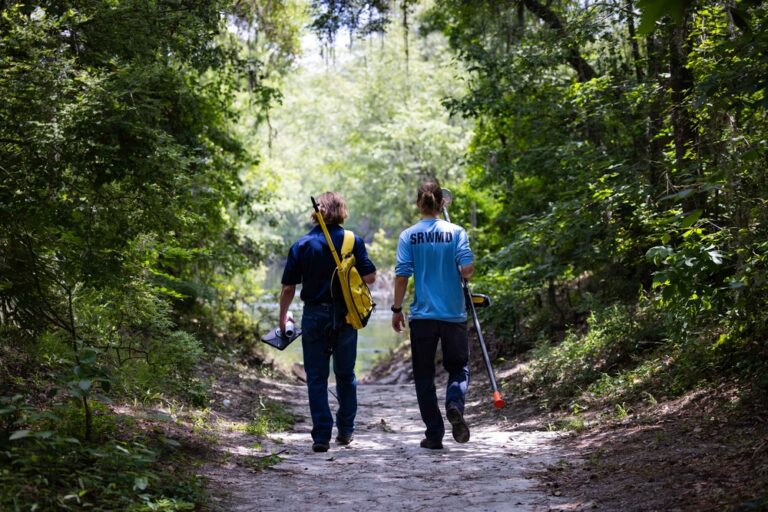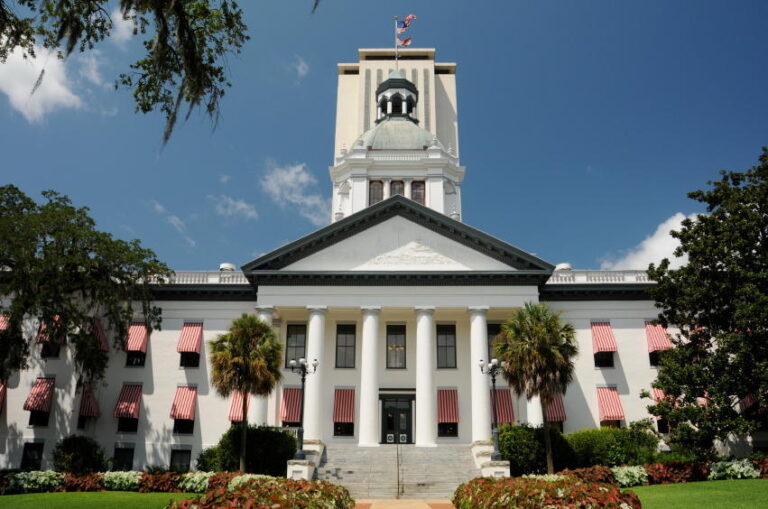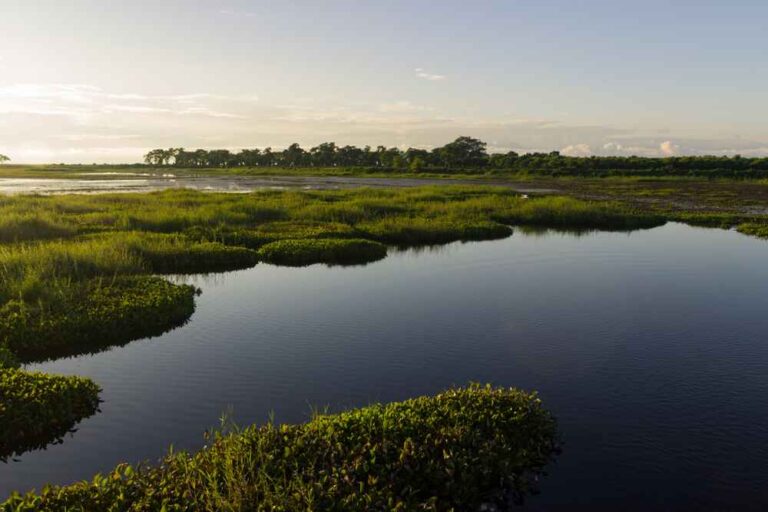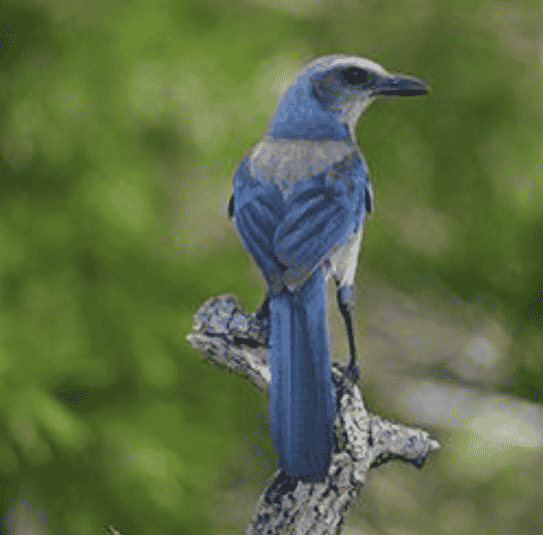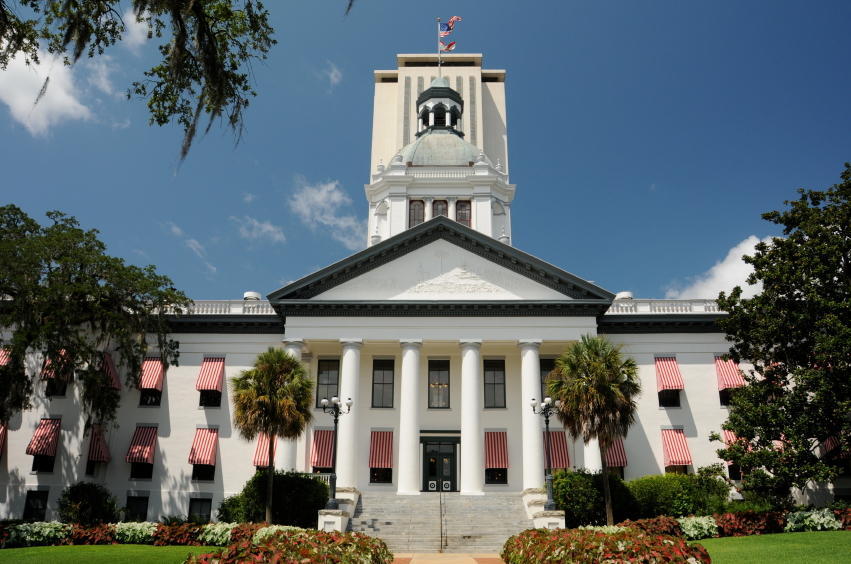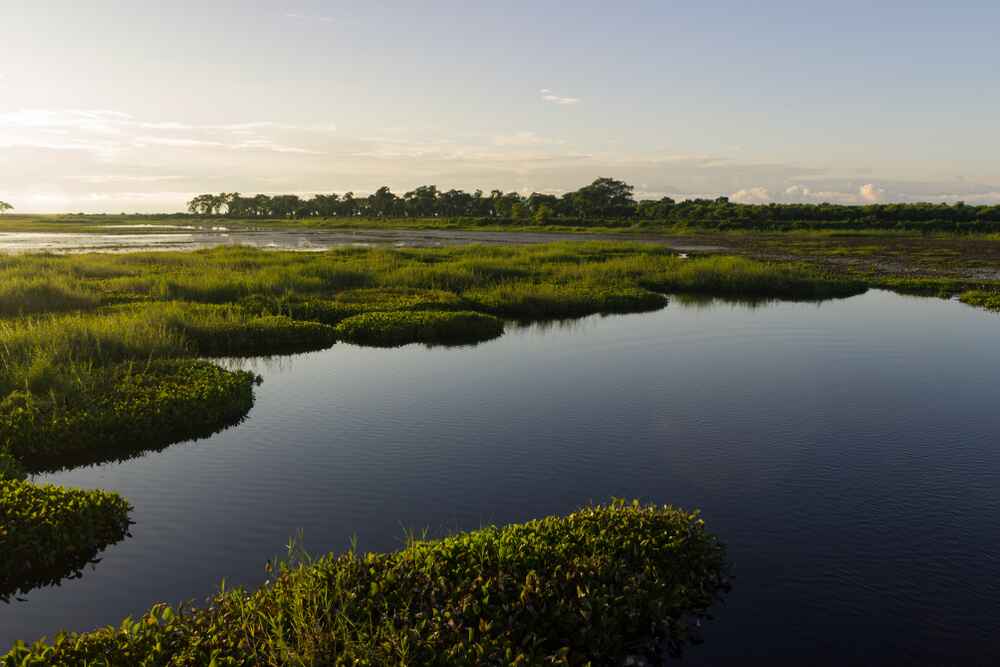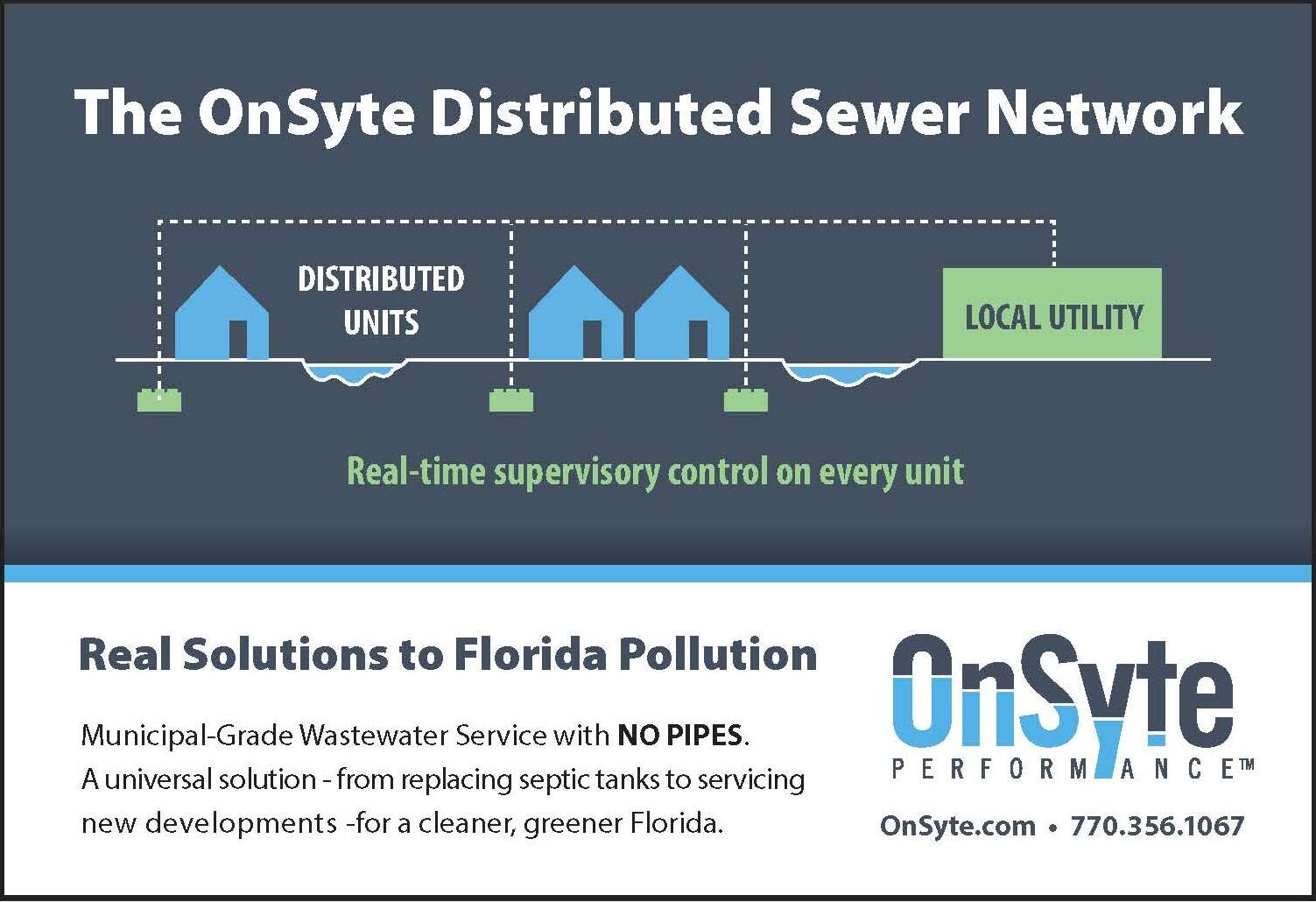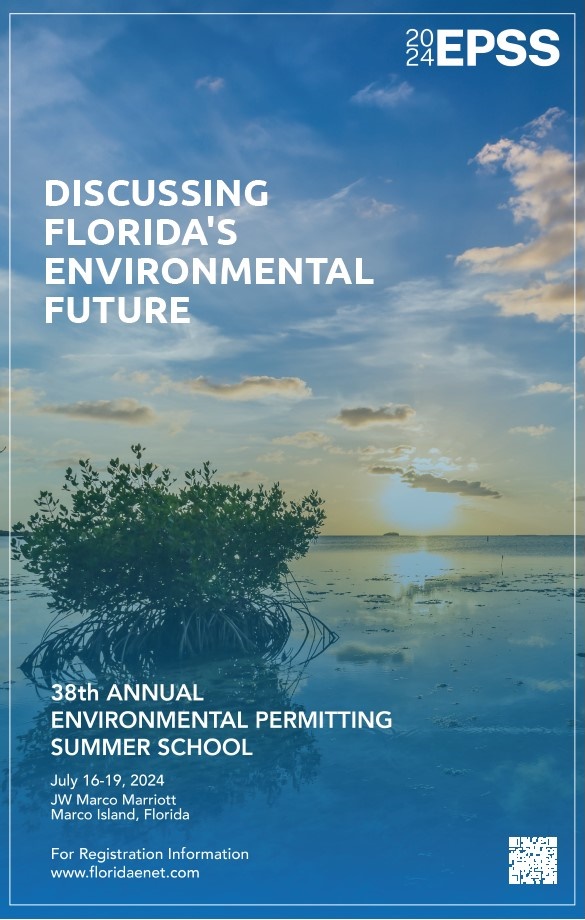DEP Awards $25 Million to Strengthen Water Supply Infrastructure in Northwest Florida
The Florida Department of Environmental Protection (DEP) recently awarded $25 million in Local Government Water Supply Pilot Grant Program funds for 13 projects designed to improve water supply infrastructure in Northwest Florida. The projects are intended to enhance water supply resilience in the region, reduce water loss, and ensure residents have dependable access to drinking water and essential resources for firefighting.
“DEP remains committed to securing Florida’s water future through proactive investments in infrastructure and natural resource protection,” said DEP Secretary Alexis A. Lambert.
These awards are expected to support the water needs of approximately 170,000 residents across Escambia, Santa Rosa, Okaloosa, and Walton counties. Northwest Florida’s long-term water supply strategy addresses the region’s unique water challenges, including the protection of the Coastal Floridan Aquifer where many of the largest public supply water users reside in fast-growing coastal communities.
Key projects include.
- $3 million for the replacement and upgrade of the City of Gulf Breeze’s Gulf Islands National Seashore water transmission main. The undersized, 50-year-old concrete main will be replaced with a larger main to increase reliability and to act as an emergency supply main for the Pensacola Beach water system operated by the Emerald Coast Utility Authority.
- $3.5 million for the City of Mary Esther to replace mains to address issues with water supply, water loss, water quality and insufficient flow capacity due to older, undersized piping.
- $773,419 for the City of Paxton to replace existing 2-inch water lines with 6-inch water lines to meet water supply and firefighting needs.
FWC thanks building owners for hosting rooftop-nesting shorebirds
Florida Fish and Wildlife Conservation Commission (FWC) is thanking building owners and managers hosting shorebird and seabird species nesting on their roofs this season. Shorebirds and seabirds typically nest directly on beaches, but according to FWC, species including black skimmers, least terns, roseate terns and American oystercatchers are increasingly using gravel rooftops to nest and raise chicks.
Rooftop nesting occurs between April and September but can begin as early as February for American oystercatchers in some regions. Building rooftops provide important alternative nesting habitat for shorebirds and seabirds, many of which are imperiled. Roughly 50 percent of Florida’s least tern population relies upon rooftops for nesting.
If you own or manage a building where shorebirds or seabirds are nesting on the roof, you can coordinate with a FWC Regional Shorebird Biologist to learn how to help promote nesting success. To find a regional shorebird biologist near you, go to MyFWC.com/Shorebirds and click on “Shorebird Nest Dates and Contacts.”
If you have shorebirds or seabirds nesting on your roof, FWC recommends waiting to conduct routine maintenance and nonemergency repairs until after shorebird nesting season ends in September. If unexpected repairs are required during the nesting season, FWC’s regional shorebird biologists can work with building owners to determine if take could occur and how to apply if a permit is needed.
St. Johns Riverkeeper hosting “bat paddle” in June
St Johns Riverkeeper is sponsoring a beginner-friendly two-hour paddle along the St Johns River. Nature lovers can experience the evening flight of “clouds of bats” as they begin their adventures at sunset.
The event will take place at 7 p.m. between June 5 and 8.Participants will meet at the Palatka City Marina for a quick paddle lesson and fitting for kayaks.
The Riverkeeper describes the event as a light paddle along the riverfront out to an optimal spot to watch the sunset. After sunset, participants will have an opportunity to observe the cloud of colony bats as they leave their roost for their nightly adventures and learn about the benefits of bats from a local naturalist.
After the kayak trip, participants may extend their evening by exploring the city of Palatka.
Register here to reserve your spot through Earth Kinship. Choose any of the dates to paddle with fellow St. Johns Riverkeeper supporters and take advantage of the discounted bring-your-own-kayak rate.
Time to start being BearWise® this year
The Florida Fish and Wildlife Conservation Commission (FWC) reminds the public to be BearWise® and watch for bears as they stop hitting the winter snooze button. Bears have left their winter dens for food and water and rarely pass up an easy meal.
Accessible garbage, bird seed, or pet food left around your property is like ringing a dinner bell. Secure your attractants to ensure bears will move on from your neighborhood and females won’t teach their cubs your yard is a convenient buffet.
Remember, a screened-in porch counts as “outside” to a hungry black bear.
- Never feed or approach bears.
- Remove bird feeders when bears are active.
- Feed your pets inside if possible – never leave pet food outdoors.
- Clean and store your grills and smokers.
- Secure food, garbage, and recycling.
- Alert your neighbors to bear activity in the area.
Black bears are generally not aggressive. Mind your pets. Dogs can trigger defensive behaviors from bears, especially females with cubs. Keep dogsclose on a short leash and stay aware of surroundings. Before letting a dog outside in the yard, flip the exterior lights on and off and bang on the door to give bears and other wildlife a chance to leave the area.
Bears cross roadways as they become more active this time of year. Avoid vehicle collisions by slowing down when driving, particularly in rural areas at dawn or dusk. Look for road signs identifying bears and other wildlife crossing areas. Each year in Florida, an average of 250 bears are killed after being hit by vehicles.
If you are having a bear conflict, FWC should be your first call.
Go to MyFWC.com/Contact and click “Contact Regional Offices” to find the phone number for your region. Call the FWC’s Wildlife Alert Hotline at 888-404-FWCC (3922) to report someone who is harming bears or intentionally feeding them.
Record Low Water Levels in the Mid-Hawthorn Aquifer in Northeastern Cape Coral
The South Florida Water Management District’s Governing Board has authorized the District’s Executive Director to issue a Water Shortage Order imposing Modified Phase IV Water Shortage restrictions to protect groundwater in the Mid-Hawthorn Aquifer.
The aquifer, located approximately 125 feet underground, provides water to many private wells in the area. Water levels within this aquifer are at record low levels.
The restrictions go into place when water levels in the Mid-Hawthorn Aquifer decline below the “future action level” of -93.01 feet for two consecutive weeks. As of April 9, 2025, the water level at the USGS Monitoring Well L-4820 in the water shortage area is at -91.68 feet.
Phase IV water restrictions mean residents will no longer be able to use their lawn irrigation systems in the designated area. Currently, landscape irrigation is limited to one day a week in the designated area for irrigation water supplied by private wells.
Residents can help alleviate water shortages by following their irrigation rules and taking steps to conserve water as much as possible.
What is a Vertical Oyster Garden?
St. Johns Riverkeeper is partnering with the Jacksonville University Marine Science Institute, Coastal Conservation Association Florida, and the Riverview Collective Community Organization to install Vertical Oyster Gardens(VOGs) along the St. Johns River and its tributaries in the Jacksonville area.
VOGs are recycled oyster shells strung together on a wire that hangs down from docks along the river. The VOGs create habitat for new oysters along with many other species of marine invertebrates.
The Riverkeeper characterizes the oyster as the ecosystem’s unsung hero. Oysters make waterways healthier and communities more resilient. A single oyster can filter up to 50 gallons of water per day, and a 1-acre oyster reef can filter 24 million gallons of water per day. They improve water quality and clarity by removing algae, organic matter, and excess nutrients. Oysters capture and store carbon dioxide from the atmosphere.
Oyster reefs are natural buffers against coastal erosion and storm surges. As oyster shells cluster, they reduce wave energy and help protect shorelines from the full force of storms. The reefs also create habitat for hundreds of aquatic species, including commercially and recreationally valuable fish species.
Oyster reefs are one of the planet’s most imperiled marine habitats, with more than 85 percent of natural reefs lost due to overharvesting, disease, and pollution.
Pensacola receives Bronze Bicycle Friendly Community
The City of Pensacola is celebrating its recent recognition by the League of American Bicyclists as a Bronze Bicycle Friendly Community. This prestigious designation acknowledges Pensacola’s ongoing commitment to creating a more bikeable and accessible city for residents and visitors alike.
“We are incredibly proud to receive the Bronze Bicycle Friendly Community designation,” said city transportation planner Caitlin Cerame. “This recognition reflects the hard work and dedication of our city staff, local advocates, and community partners in making Pensacola a better place to ride. As we enter National Bike Month, we are excited to showcase our progress and encourage even more people to experience the joy and benefits of cycling.”
The Bicycle Friendly Community program recognizes communities across the United States for their efforts in building better places to bike. The Bronze level designation highlights Pensacola’s achievements in areas such as infrastructure, education, encouragement, enforcement, and evaluation. It also represents the city’s continued efforts to implement recommendations from the Active Transportation Plan.
“National Bike Month is the perfect time to explore Pensacola on two wheels,” adds Cerame. “Whether you’re a seasoned cyclist or just starting out, we encourage everyone to participate in local events and discover the many benefits of biking, from improved health and well-being to reduced traffic congestion and a smaller carbon footprint.”
75 Years of Service: Mosquito Management Celebrates Public Health, Innovation, and Community Impact
For 75 years, Hillsborough County Mosquito Management Services has been on the front lines of protecting residents from mosquito-borne diseases and reducing the number of mosquitoes.
The first organized mosquito control efforts in the Tampa area were conducted by the Davis Island Civic Association, which contracted for aerial spraying of the island. In 1947, the contract spray plane crashed, destroying the aircraft. The association then directed its approach toward the formation of an organized county mosquito control effort that led to the creation of Hillsborough County Mosquito Control by a Special Act of the State Legislature on June 13, 1949.
In September of the same year, the Hillsborough County Board of Commissioners levied .25 mill to fund the mosquito management services program. In 1994, the Board voted to place Mosquito Management under Public Works, which is where the unit lives today.
Mosquito Management continues to help protect residents by monitoring for mosquito-borne illnesses, and controlling mosquitoes through biological methods, trapping, elimination of breeding sites, destruction of larvae, and spraying products approved by the EPA on the street level and from the sky.
There are 30 mosquito traps throughout the County to keep track of the mosquito population, and the Sentinel Chicken Program monitors for the Encephalitis viruses in birds before they reach humans. Mosquito Management Services also works with the Florida Department of Health to monitor mosquito-borne diseases such as dengue fever, Zika, and chikungunya.
Marion County Commission Celebrates Farmland Preservation
The Marion County Board of County Commissioners proudly proclaimed April as Farmland Preservation Month, honoring its rich agricultural heritage and the vital role of the equine industry in the community. Marion County plays a pivotal role in the nation’s equestrian landscape and the preservation of rural land as home to more than 3,300 farms, including over 1,200 horse farms.
The county’s agricultural and equine industries are integral to its economy. Their 2023 Equine Economic Impact Study notes roughly one-fifth of Marion County’s employment, landmass, and economy are connected to the equine industry.
With 28,500 jobs, more than 200,000 acres of farmland, and a $4.3-billion annual economic impact, the equine sector is a cornerstone of the county’s success. For more than 20 years, Ocala/Marion County has proudly been recognized as the “Horse Capital of the World®” and known for its mineral-rich soil which continues to produce world-class equestrian champions.
Planned Wekiva Trail Extension gets good news
Lake County’s plans for the 11.5-mile rails-to-trails Wekiva Trail Extension are moving forward.
Railroad company CSX Transportation plans to collaborate with Lake County, the City of Tavares, the City of Mount Dora, and the Trust for Public Land on using abandoned train tracks to develop a multimodal travel corridor connecting downtown Tavares to downtown Mount Dora, benefiting local community members, tourists, and businesses.
“The Wekiva Trail Extension will ultimately make Lake County a safer place to travel and play,” said Lake County’s Engineering Director Jeff Earhart.
“This will be great for everyone who wants to get outside and exercise,” said Leslie Campione, Lake County Board of County Commissioners chairman. “The Wekiva Trail Extension will be an asset for Lake County’s residents and visitors, and there are huge economic benefits for downtown districts and businesses near trails such as this.”
Negotiations with CSX are expected to be completed by the end of 2025.
The Wekiva Trail Extension is anticipated to cost about $53 million. Lake County and its partners hope to secure grants to cover more than 50 percent of the cost. Lake County has invested $36 million to create 38 miles of trails since 2000.


